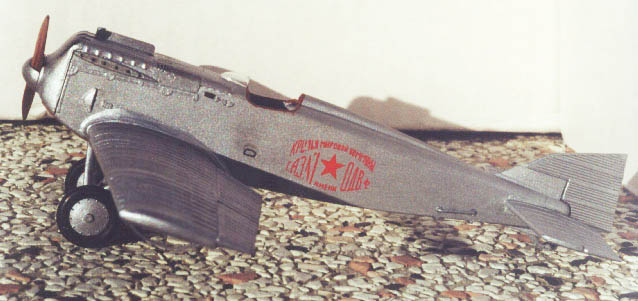
|
Model by Massimo Tessitori |
|
|
|

| This is the ICM model, built out of box.
ICM was very courageous to build the prototype of an aircraft of which few were built, and none reached the service status. On the whole, I would say that ICM made a good work on this nearly unknown aircraft. The aircraft is nicely and neatly moulded, and the fit is good. It represents the second prototype (I.L.2 or I.L.400b) in its first form, apart for the protrusion over the engine cowling, that was introduced later aside other modifies. So, this should be corrected or deleted (it don't appear in all photos).The decals sheet includes two slogans Krylya mirovoy kommoony GAZ- No.1 imeni ODVF, in the first form (they were modified during repairs after an incident). The second aircraft with a red star visible on the model box is an invention, none other I-1 never had such look. |
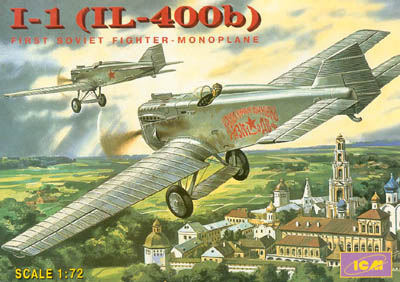 |
The cockpit is poor, unfortunately there are not documents about it
and one has to improve it on the base of some biplanes, as the R-1 or D.H.4
on which Polikarpov worked immediately before this prototype. It looks
that the instruments had a white background with black indicators.
The fairing of exhaust pipes should be drilled: the holes were rather
large.
The scomposition of the model is strange, each wing being divided into
five pieces to be mounted on a structure passing through the fuselage.
Despite the excellent fit of the pieces, this scomposition creates
the worst problem of the model: a junction line runs along the wing upper
and undersurfaces, aside the ailerons. This line wasn't present on the
original aircraft, but one can't fill it because this would ruin the nicely
done corrugated metal skin.
The only thing to do is to do check the fit of pieces in the best possible
way, and then to suppose that there was a junction line on the real aircraft
too.
The small windshield is curved, but photos seem to show a straight
one. It is logical: a piece of plastic can be easily bended on a conical
or cylindrical surface, while a double curvature, as on the kit, would
have required hot moulding and some loss of trasparency. I suggest to rebuild
it by plastic heated and bended on a rod.
The cooler was source of some embarassment: I interpretated it as a
closed cooling surface as on Schneider cup flying boats, but now it seems
that it was a grille covering an internal cooler. On the other hand, no
air outlet is known.
In the same way, I don't know what is the flat device between the undercarriage
legs, it was not on all prototypes, I think it is an oil cooled tank.
I have replaced some plastic handles and probes with other ones made
by brass rod to streghten the model.
X-shaped wires should be between both front and rear legs of the undercarriage.
Click on the images below to see larger ones.
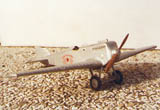 |
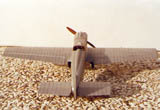 |
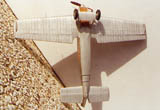 |
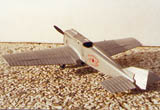 |
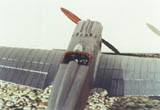 |
To see a much better model and a detailed building report, go here: